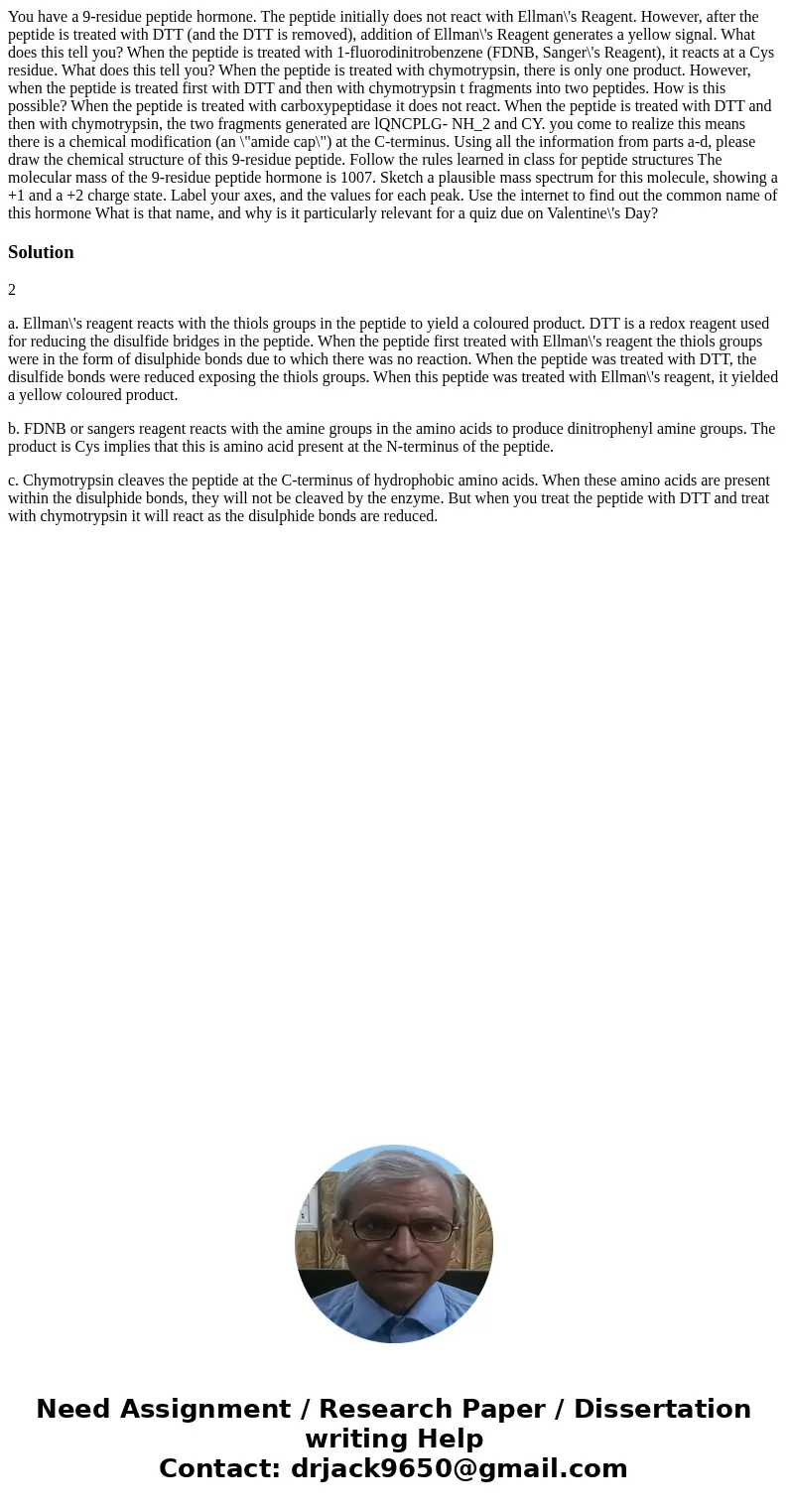You have a 9-residue peptide hormone. The peptide initially does not react with Ellman\'s Reagent. However, after the peptide is treated with DTT (and the DTT is removed), addition of Ellman\'s Reagent generates a yellow signal. What does this tell you? When the peptide is treated with 1-fluorodinitrobenzene (FDNB, Sanger\'s Reagent), it reacts at a Cys residue. What does this tell you? When the peptide is treated with chymotrypsin, there is only one product. However, when the peptide is treated first with DTT and then with chymotrypsin t fragments into two peptides. How is this possible? When the peptide is treated with carboxypeptidase it does not react. When the peptide is treated with DTT and then with chymotrypsin, the two fragments generated are lQNCPLG- NH_2 and CY. you come to realize this means there is a chemical modification (an \"amide cap\") at the C-terminus. Using all the information from parts a-d, please draw the chemical structure of this 9-residue peptide. Follow the rules learned in class for peptide structures The molecular mass of the 9-residue peptide hormone is 1007. Sketch a plausible mass spectrum for this molecule, showing a +1 and a +2 charge state. Label your axes, and the values for each peak. Use the internet to find out the common name of this hormone What is that name, and why is it particularly relevant for a quiz due on Valentine\'s Day?
2
a. Ellman\'s reagent reacts with the thiols groups in the peptide to yield a coloured product. DTT is a redox reagent used for reducing the disulfide bridges in the peptide. When the peptide first treated with Ellman\'s reagent the thiols groups were in the form of disulphide bonds due to which there was no reaction. When the peptide was treated with DTT, the disulfide bonds were reduced exposing the thiols groups. When this peptide was treated with Ellman\'s reagent, it yielded a yellow coloured product.
b. FDNB or sangers reagent reacts with the amine groups in the amino acids to produce dinitrophenyl amine groups. The product is Cys implies that this is amino acid present at the N-terminus of the peptide.
c. Chymotrypsin cleaves the peptide at the C-terminus of hydrophobic amino acids. When these amino acids are present within the disulphide bonds, they will not be cleaved by the enzyme. But when you treat the peptide with DTT and treat with chymotrypsin it will react as the disulphide bonds are reduced.

 Homework Sourse
Homework Sourse